
I’ll be the first to admit that it rains in England. So when visiting castles and stately homes, I often scurry through the gardens and take refuge inside. But the day I made it to Chirk Castle was gloriously sunny, so I got the full effect of the gardens.

The views across the Ceiriog Valley in Wales are spectacular. I’m sure the herd of 500 deer, established by the 1500s, enjoy the views as much as their ancestors did (when they’re not being hunted by their owners). But deer and cattle are not allowed inside the 5 manicured acres of the garden. They’re kept out by the Ha-Ha, built in 1764 by landscape architect William Emes.
What’s a Ha-Ha? It’s a deep ditch with a stone or brick wall set into one side. Presumably the name comes from the reaction of a person who stumbles into it, although I’d expect to hear some choice words beyond “Ha ha!” Anyway, it works as well as a fence, but preserves the views. I’ve always wanted one, but I would probably get sued if someone stumbled in.

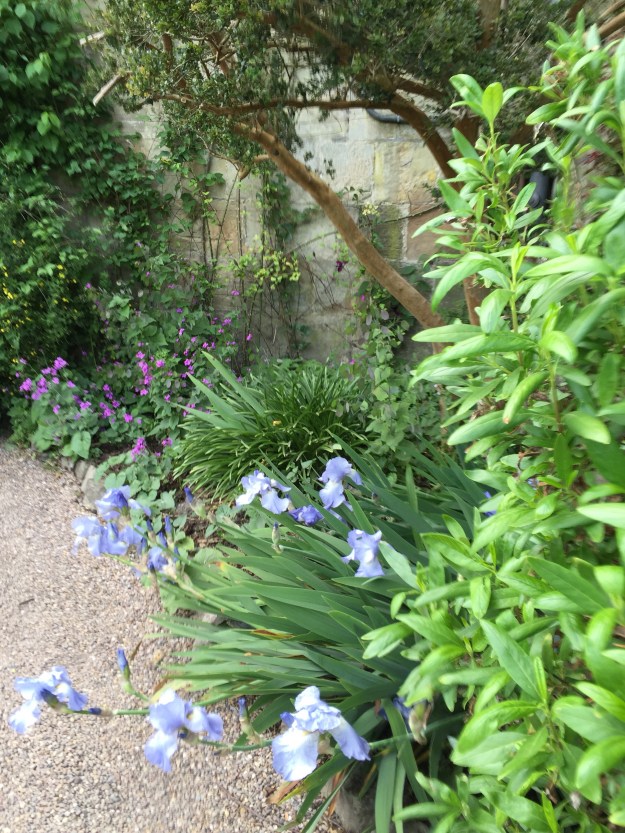

Generations of the Myddelton family lovingly tended the gardens. I visited in springtime.


The yew-tree topiaries are about 130 years old. These days, there are only three gardeners. It takes them six to eight weeks every year just to trim the topiaries.

The grandest topiary is the Crown on the Cushion.
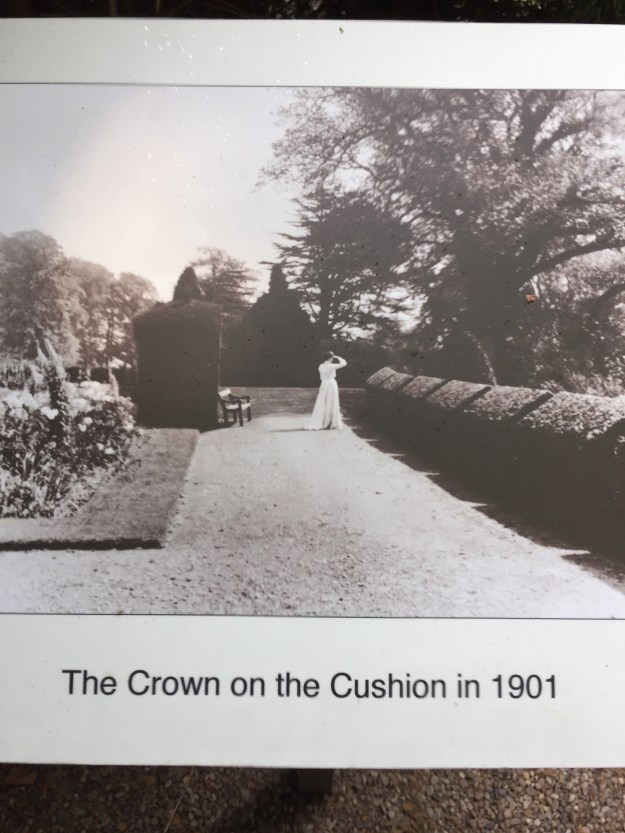
In 1901, it was not that much taller than a Victorian lady.

Now, it’s big enough to pitch a tent under.
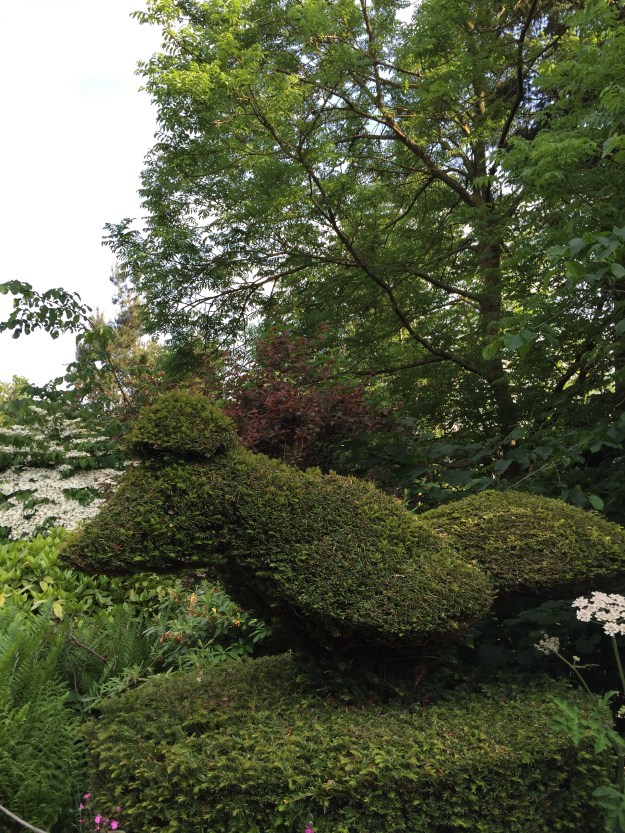
I like this bird topiary, perched in a shady spot among the ferns.

In recent years a beloved tree was felled by a storm.

The Myddelton family had its trunk carved into a garden bench.



If I were more of a gardener myself, I’d know exactly what I’m looking at. Rhododendrons? I like the wildness of the grassy bordered walks, after the formality of the manicured gardens.

Inside the castle, there was a special exhibit of embroidery based on the grounds and gardens. The piece above, “Across the Fields,” is by Janet Vance of the Embroiderers’ Guild.

Sue Sercombe made “Snowdrops in the Woods.”

Sheila Foggin used her sewing machine in ways I would not dream of, to create “Through the Gate.”
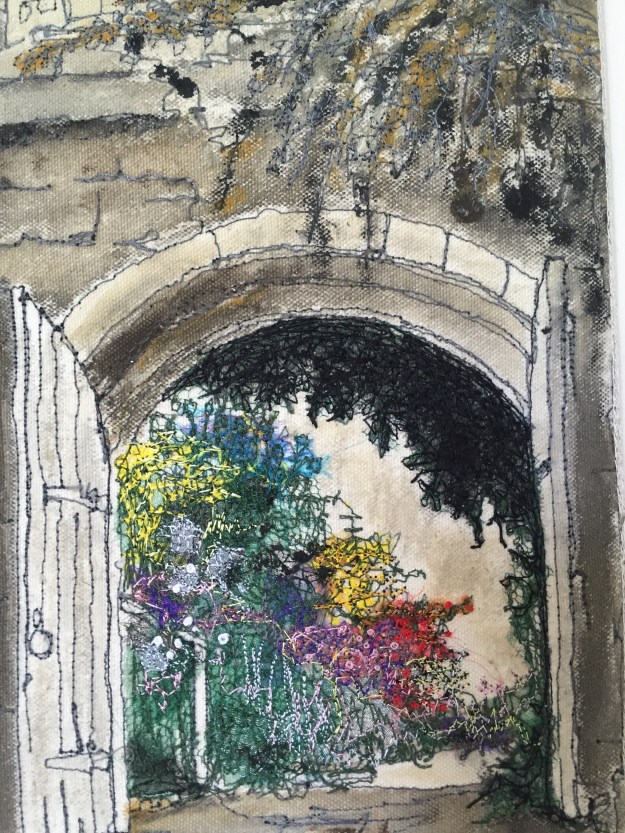
I always think that needlework is under-appreciated as an art form. I have trouble appreciating the gardener’s art too, because I know so little about it.
Well, I’ll head back into the castle for one last look at the grand Drawing Room.
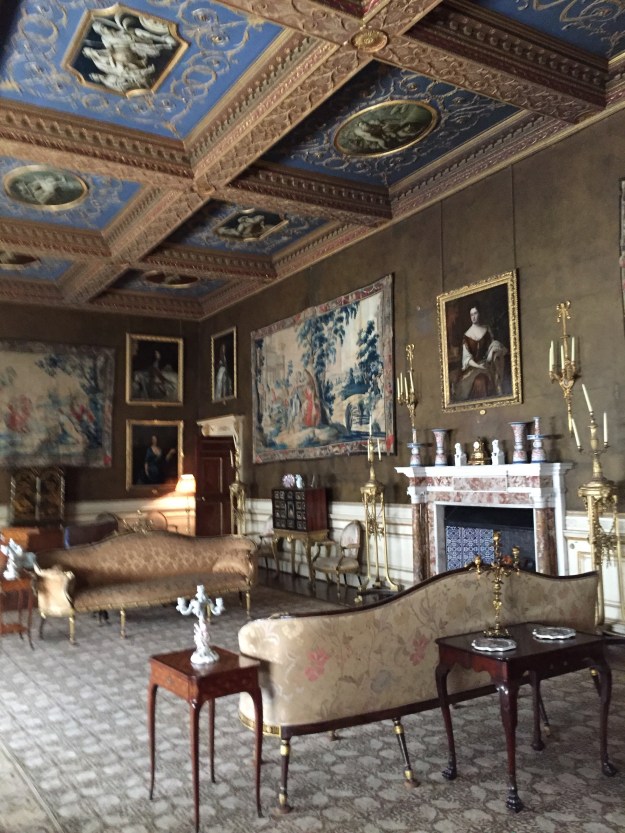

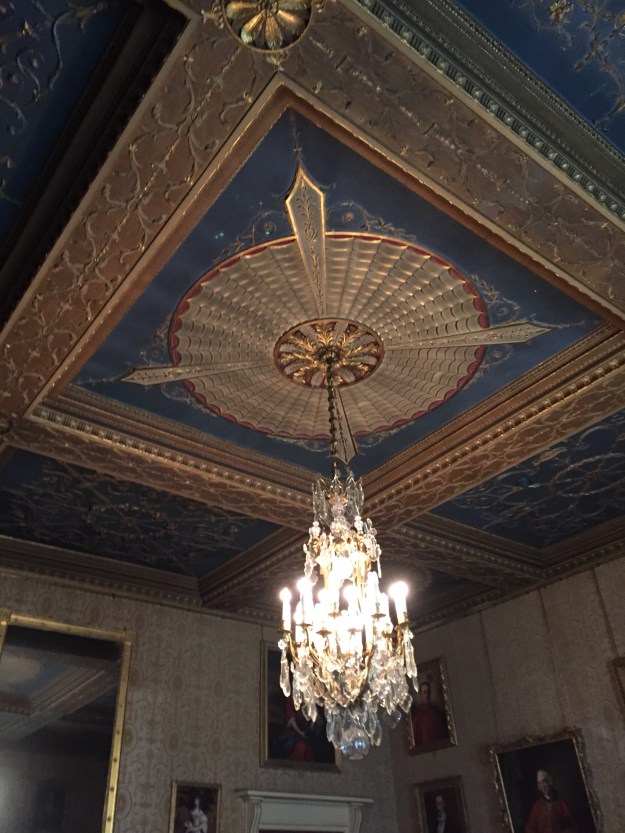
It has an 18th-century look to it. In a 700-year-old castle, each succeeding generation makes its mark.
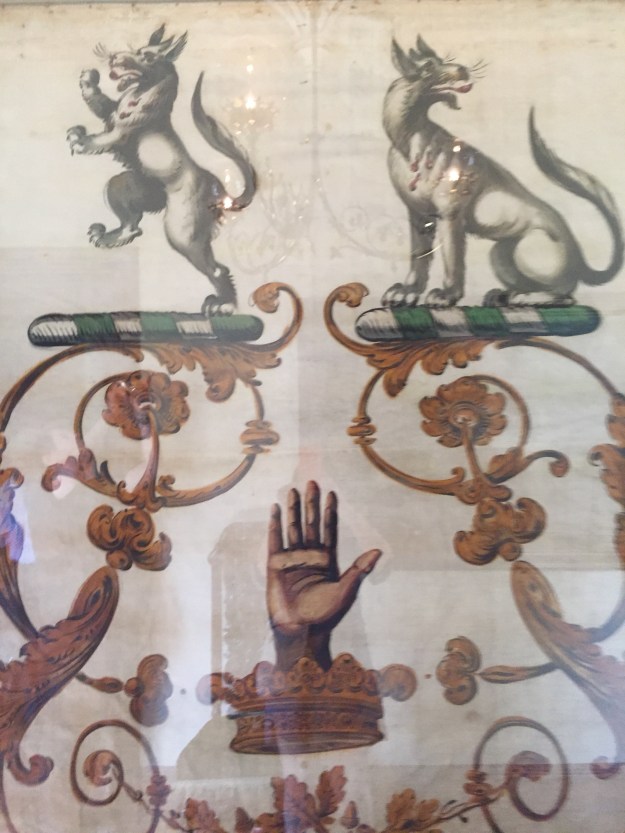
And there’s that famous Red Hand again! It’s the subject of all kinds of entertainingly bloody legends, but really it just represents the title of Baronet which the Myddelton family bought themselves a few centuries ago.


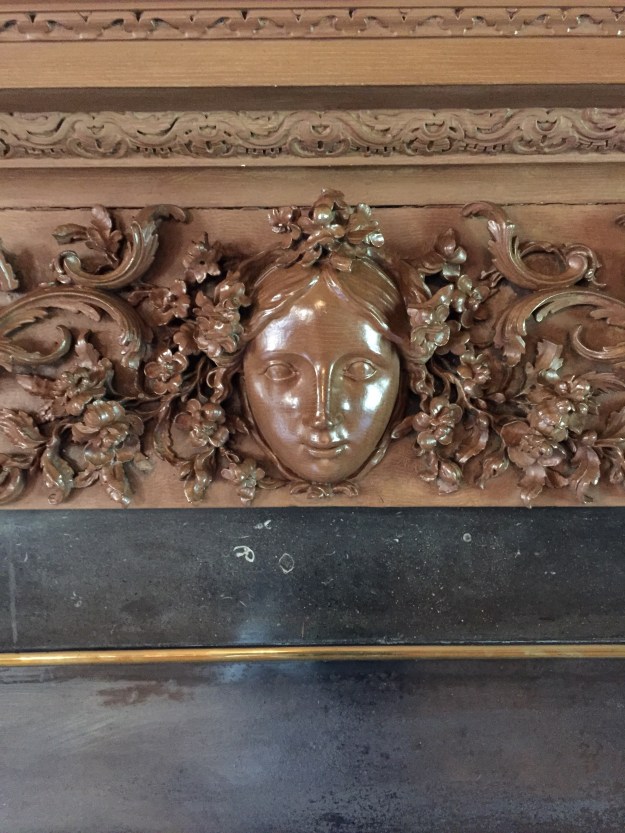
So many faces have come and gone at Chirk. We know a bit about those who made it into the history books. The more humble “below stairs” stories would be just as fascinating.
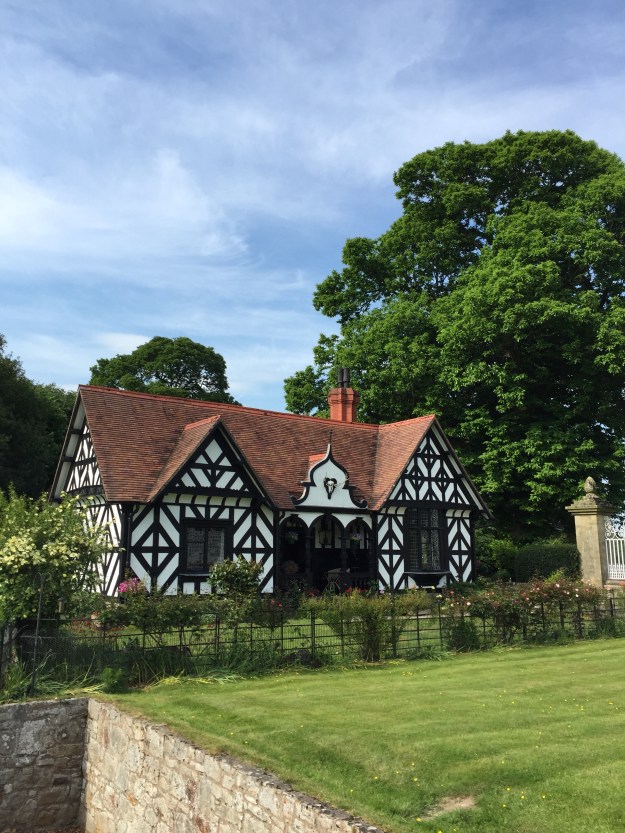
On my way out, I’ll admire this cottage perched on the edge of the Ha-Ha. Maybe it was once the home of the chief gardener. I’d cheerfully move right in! Just show me how to use those garden shears.
Join me next time for more explorations in Europe and the British Isles!
